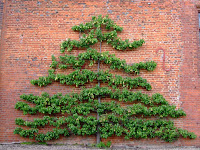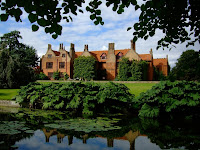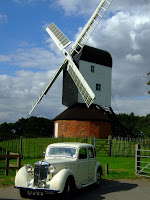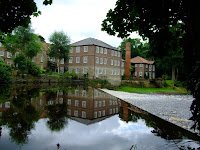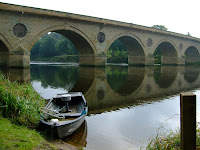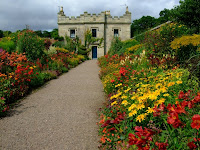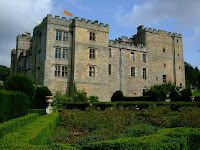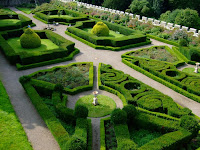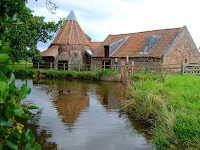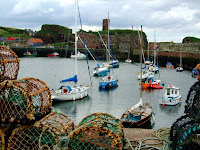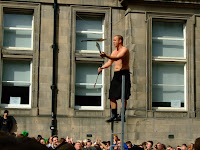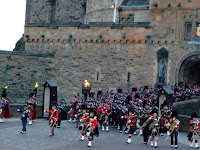 Depending on the age of your children, Wimbledon is either known for one or two things: The Wombles and Lawn Tennis. There are other interesting sights in the area so we set off across the Thames to explore Wimbledon and Wimbledon Common, it being 7 years since we first wandered over the Common.
Depending on the age of your children, Wimbledon is either known for one or two things: The Wombles and Lawn Tennis. There are other interesting sights in the area so we set off across the Thames to explore Wimbledon and Wimbledon Common, it being 7 years since we first wandered over the Common.Commons are a wonderful remnant of the past that provide fabulous green spaces for public enjoyment, in this case over 1000 acres, so, even with two visits, there is much we have not seen.
 Tucked into the southeastern corner is Cannizaro Park, the grounds of a grand house that is now a hotel. The Park is owned by the Council and is a rhododendron showplace at the right time of the year. Other than the Millennium Fountain, there was nothing overly spectacular on display as we circumnavigated the Park.
Tucked into the southeastern corner is Cannizaro Park, the grounds of a grand house that is now a hotel. The Park is owned by the Council and is a rhododendron showplace at the right time of the year. Other than the Millennium Fountain, there was nothing overly spectacular on display as we circumnavigated the Park. From there we went to the Wimbledon windmill, the focal point of our 2001 walk and then set off for Southside House (very close to Cannizaro Park but it was not open when we were in that area).
From there we went to the Wimbledon windmill, the focal point of our 2001 walk and then set off for Southside House (very close to Cannizaro Park but it was not open when we were in that area).Southside House is a real treat: it was the poor-relation amongst the many houses that the family owned and has never been upgraded so there exists a rare example of a perriwig powdering closet in a room entirely covered in painted hessian (the poor man's tapestry).
 Usually such rooms have been re-decorated and the painted hessian discarded - in the same manner one discards stripped wallpaper - so it is very rare to have a complete set of painted hessian wall-coverings in-situ.
Usually such rooms have been re-decorated and the painted hessian discarded - in the same manner one discards stripped wallpaper - so it is very rare to have a complete set of painted hessian wall-coverings in-situ.The whole place is delightfully quirky and eccentric. One Horton ancenstor had amassed the largest collection of portraits (with many van Dykes) but a descendant forfeited them to the crown in the Jacobite Rebellion. From the government coffers they ended up on Walpole's wall and thus his son "inherited" them and sold the collection to Catherine the Great and so they now hang in the Hermitage in St Petersburg.
 Leaving the Common we set off for "The All England Lawn Tennis and Croquet Club" better know simply as "Wimbledon", the home of tennis and "Centre Court". Even for tennis avoiders like us, the award winning Wimbledon Lawn Tennis Museum on the grounds is worth a visit.
Leaving the Common we set off for "The All England Lawn Tennis and Croquet Club" better know simply as "Wimbledon", the home of tennis and "Centre Court". Even for tennis avoiders like us, the award winning Wimbledon Lawn Tennis Museum on the grounds is worth a visit. Wandering back to the common we passed the Thai Buddapadipa Temple, looking tranquil and serene but completely out of place (it is one of only two outside Asia) among the substantial houses in the area, before arriving back at the Windmill.
Wandering back to the common we passed the Thai Buddapadipa Temple, looking tranquil and serene but completely out of place (it is one of only two outside Asia) among the substantial houses in the area, before arriving back at the Windmill.















